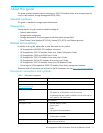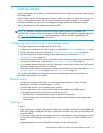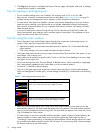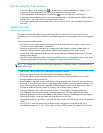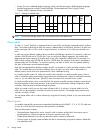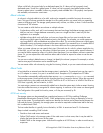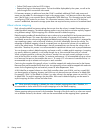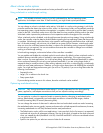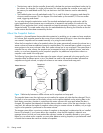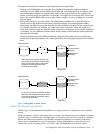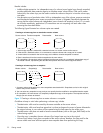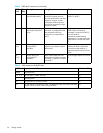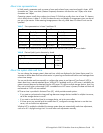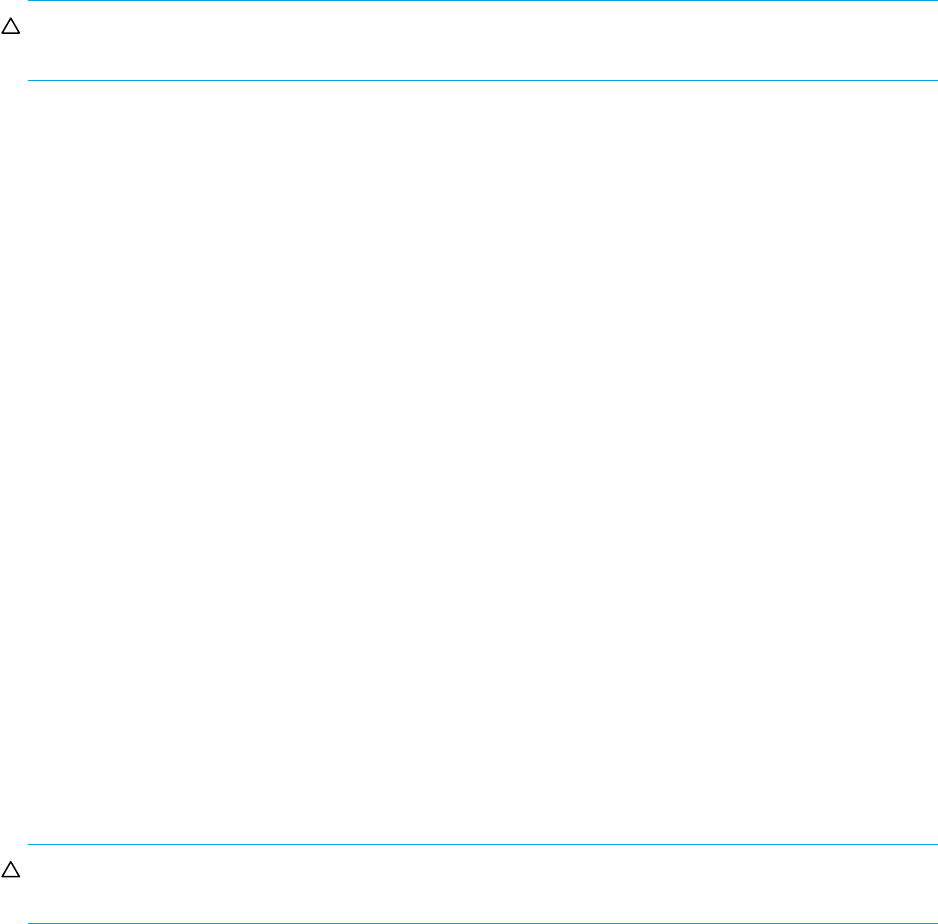
HP StorageWorks 2000 G2 Modular Smart Array Reference Guide 19
About volume cache options
You can set options that optimize reads and writes performed for each volume.
Using write-back or write-through caching
NOTE: Only disable write-back caching if you fully understand how the host operating system,
application, and adapter move data. If used incorrectly, you might hinder system performance.
You can change a volume's write-back cache setting. Write-back is a cache-writing strategy in which the
controller receives the data to be written to disks, stores it in the memory buffer, and immediately sends the
host operating system a signal that the write operation is complete, without waiting until the data is actually
written to the disk. Write-back cache mirrors all of the data from one controller module cache to the other.
Write-back cache improves the performance of write operations and the throughput of the controller.
When write-back cache is disabled, write-through becomes the cache-writing strategy. Using write-through
cache, the controller writes the data to the disks before signaling the host operating system that the process
is complete. Write-through cache has lower write operation and throughput performance than write-back,
but it is the safer strategy, with minimum risk of data loss on power failure. However, write-through cache
does not mirror the write data because the data is written to the disk before posting command completion
and mirroring is not required. You can set conditions that cause the controller to change from write-back
caching to write-through caching.
In both caching strategies, active-active failover of the controllers is enabled.
You can enable and disable the write-back cache for each volume. By default, volume write-back cache is
enabled. Because controller cache is backed by super-capacitor technology, if the system loses power,
data is not lost. For most applications, this is the correct setting. But because back-end bandwidth is used to
mirror cache and because this mirroring uses back-end bandwidth, if you are writing large chunks of
sequential data (as would be done in video editing, telemetry acquisition, or data logging), write-through
cache has much better performance. Therefore, you might want to experiment with disabling the write-back
cache. You might see large performance gains (as much as 70 percent) if you are writing data under the
following circumstances:
• Sequential writes
• Large I/Os in relation to the chunk size
• Deep queue depth
If you are doing random access to this volume, leave the write-back cache enabled.
Optimizing read-ahead caching
CAUTION: Only change read-ahead cache settings if you fully understand how the host operating
system, application, and adapter move data so that you can adjust the settings accordingly.
You can optimize a volume for sequential reads or streaming data by changing its read-ahead cache
settings. Read ahead is triggered by two back-to-back accesses to consecutive LBA ranges, whether
forward (increasing LBAs) or reverse (decreasing LBAs).
You can change the amount of data read in advance after two back-to-back reads are made. Increasing
the read-ahead cache size can greatly improve performance for multiple sequential read streams; however,
increasing read-ahead size will likely decrease random read performance.
• The Default option works well for most applications: it sets one chunk for the first access in a sequential
read and one stripe for all subsequent accesses. The size of the chunk is based on the chunk size used
when you created the vdisk (the default is 64 KB). Non-RAID and RAID-1 vdisks are considered to have
a stripe size of 64 KB.
• Specific size options let you select an amount of data for all accesses.



